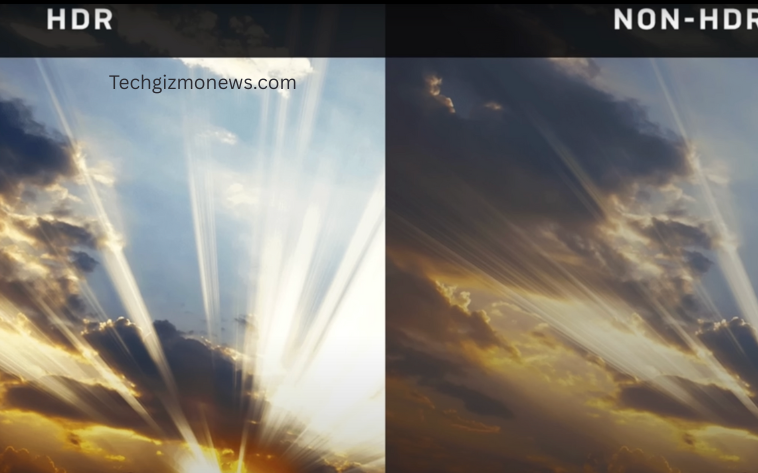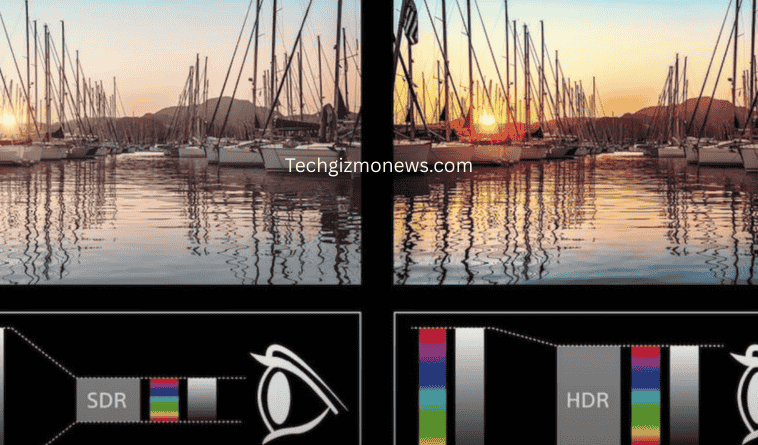HDR in Mobile Phones: 5 Ways HDR Display and Camera Technology Works in 2025
Table of Contents
Introduction: Why HDR in Mobile Phones Matters in 2025
HDR in mobile phones is redefining how we experience visuals in 2025. Ever wondered why some smartphone photos capture every detail of a sunset, from the blazing sky to the dark shadows? Or why certain phone screens make movies and games feel so immersive? That’s the magic of High Dynamic Range (HDR). In this blog, we’ll uncover five key ways HDR in mobile phones works, diving into the technology behind HDR displays and cameras. Whether you’re snapping photos or streaming shows, understanding HDR will help you get the most out of your smartphone in 2025.

What is HDR? A Simple Explanation
HDR stands for High Dynamic Range, a technology that enhances the range of colors, brightness, and contrast in images and videos. In simple terms, it makes visuals look more lifelike by balancing the brightest and darkest parts of a scene. Whether it’s a sunset photo or a movie on your phone, HDR ensures you see details that standard displays or cameras might miss. In mobile phones, HDR comes in two forms:
- HDR Displays: These make your screen show richer colors and deeper contrasts.
- HDR Cameras: These capture photos and videos with better detail in both bright and dark areas.
So, how does HDR work in these two areas? Let’s break it down.
How HDR Works in Mobile Displays
Your phone’s screen is where you first notice HDR’s impact. HDR displays are designed to show a wider range of brightness levels and colors compared to standard screens. Here’s how it works:
The Role of Brightness and Contrast
An HDR display can produce brighter highlights and darker shadows, creating a more realistic image. For example, when watching a sunset on an HDR screen, you’ll see the glowing orange sky and the dark silhouette of trees with incredible detail. This is because HDR screens support:
- Higher brightness levels (measured in nits, often 1000+ nits in premium phones).
- Better contrast ratios, making blacks deeper and whites brighter.
- Wider color gamut, displaying more shades of colors for lifelike visuals.

HDR10, Dolby Vision, and HDR Formats
Not all HDR displays are the same. Mobile phones use different HDR formats, such as:
- HDR10: A widely used standard that supports 10-bit color depth for over a billion colors.
- Dolby Vision: A more advanced format that dynamically adjusts brightness and contrast scene by scene.
- HLG (Hybrid Log-Gamma): Used for broadcast content and compatible with both HDR and non-HDR displays.
When you stream HDR content from platforms like Netflix or YouTube on an HDR-certified phone (like the iPhone 14 Pro or Samsung Galaxy S23), the display brings out details that make every frame feel immersive.
How HDR Works in Mobile Cameras
HDR in mobile cameras is all about capturing photos and videos that look true to life, even in tricky lighting conditions. Whether you’re snapping a photo of a bright beach or a dimly lit room, HDR ensures you don’t lose details in highlights or shadows.Capturing Multiple ExposuresWhen you take an HDR photo, your phone’s camera captures multiple images at different exposure levels:
- Underexposed: To capture details in bright areas (like the sky).
- Overexposed: To bring out details in dark areas (like shadows).
- Normal exposure: For balanced mid-tones.
The phone’s processor then combines these images into a single photo, blending the best parts of each exposure. This process happens in milliseconds, thanks to powerful chips like Apple’s A-series or Qualcomm’s Snapdragon processors.
The Role of Software in HDR Photography
Modern smartphones rely heavily on software to make HDR photos look stunning. Features like:
- Computational photography: Algorithms analyze and enhance the image for better clarity and color.
- AI enhancements: Many phones, like the Google Pixel series, use AI to optimize HDR shots by adjusting lighting and reducing noise.
- Real-time HDR preview: Some phones show you the HDR effect on the screen before you even snap the photo.
For example, when you shoot an HDR video on a phone like the iPhone 13 or Samsung Galaxy Z Fold 5, the camera records in 10-bit color, capturing more details and smoother gradients, especially in challenging lighting.
How to Know If Your Phone Supports HDR
Want to check if your phone supports HDR? Here’s how:
- Check the specs: Look up your phone’s display details. Terms like “HDR10,” “Dolby Vision,” or “HDR-certified” indicate HDR support.
- Test with apps: Open YouTube or Netflix and look for an “HDR” badge on supported videos.
- Camera settings: Check your camera app for an HDR mode (often labeled as “HDR On” or “Auto HDR”).
- Display settings: Some phones, like Samsung’s Galaxy series, have an HDR toggle in the display settings.
Popular HDR-capable phones include the iPhone 14 series, Samsung Galaxy S23, Google Pixel 7, and OnePlus 11.
Conclusion: The Future of HDR in Mobile Technology
HDR is transforming how we experience visuals on our smartphones, from breathtaking displays to professional-quality photos and videos. As mobile processors get faster and displays get brighter, HDR technology will only get better, making our phones feel like mini-cinemas and pro cameras. Whether you’re watching a movie, playing a game, or capturing a memory, HDR ensures every moment looks as vibrant as real life. Ready to upgrade your phone for an HDR experience? Check your device’s specs and dive into the world of high dynamic range!
FAQs About HDR in Mobile Phones
1. What does HDR mean in mobile phones?
HDR stands for High Dynamic Range, a technology that enhances the range of colors, brightness, and contrast in displays and cameras for more lifelike visuals.
2. Does HDR drain battery life?
Yes, HDR displays and cameras use more processing power, which can slightly reduce battery life compared to non-HDR modes.
3. Can all phones support HDR?
Not all phones support HDR. Premium models like the iPhone 14, Samsung Galaxy S23, or Google Pixel 7 typically include HDR displays and cameras.
4. How do I enable HDR on my phone?
Check your camera app for an HDR toggle or your display settings for HDR options. Ensure you’re using HDR-compatible apps like Netflix or YouTube.
5. Is HDR worth it for mobile photography?
Absolutely! HDR captures better details in bright and dark areas, making your photos look more vibrant and professional.

